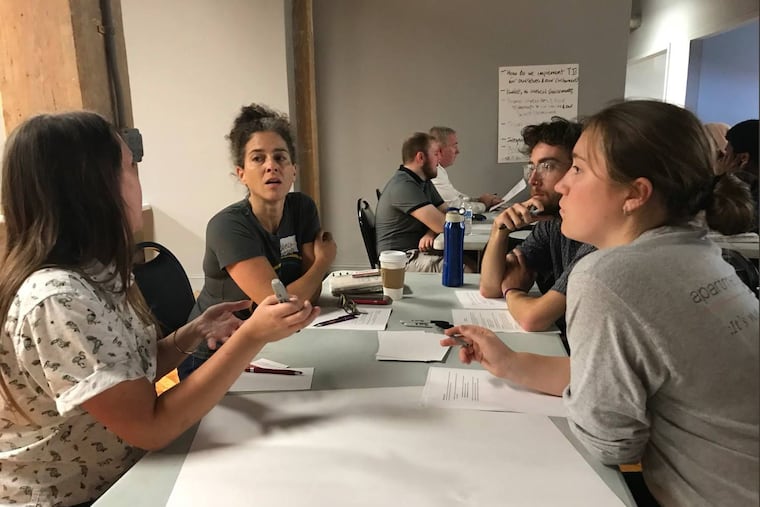Behind the scenes with Kensington’s community newsroom
After watching how the community reacted to the New York Times Magazine negatively covering Kensington, this Temple professor and her students decided to build a new platform for neighborhood voices.

In October, the New York Times Magazine published a 6,000-word article that referred to Kensington as the “Walmart of Heroin.” The day the story published, I was working with a small group of student journalists at Impact Services, a social services agency at the corner of Allegheny and Emerald Streets.
The students and I were being trained by Zoë Van Orsdol, the public health projects manager at Impact. She was helping us with the basics of trauma-informed care, and the workshop was designed to help us, as journalists, minimize the negative impact of our work on the Kensington community.
It was an odd juxtaposition to be talking about minimizing harm while reading a piece that could only be described as trauma porn.
Our session evolved into a discussion about the article.
Some people were upset by the language used, others by the framing, others by the lack of hope, action, and solutions presented, and almost everyone by the Times’ failure to use its powerful platform to advance the narrative and its choice to instead fetishize the pain of others.
Although my students and I had been working with various community members and organizations in Kensington since August to build a neighborhood newsroom, the New York Times Magazine piece and the community’s reaction to it really crystallized our mission.
The idea for Kensington Voice came from a hunch I had that in a neighborhood often at the center of our national news media’s drug and addiction journalism, the news and information needs of the community itself weren’t being met. I also suspected that because of the way Kensington had been portrayed over the last few years, trust for the news media was low, and worst of all, that the rehashing of the same dystopic, drug-war narrative was actually further traumatizing a community already traumatized by structural violence and environmental racism.
Now, a few months after watching the community’s powerful reaction to the New York Times Magazine story, my students and I operate as a pop-up newsroom, available in at least two locations (such as libraries, community centers, street corners) to the public each week. At our pop-up stations, residents and other community members can submit story ideas and questions they’d like answered through our storytelling to us. They’re also invited to further develop those story ideas at our public editorial meetings, held once every two weeks.
We then produce a monthly online issue, focused on one question, topic, or theme suggested by members of the community. In addition to traditional reporting, we let community members write in their own voices.
For our first project, we tackled the complicated issue of housing. Some residents asked us how hard it is to take an abandoned building and convert it into housing for people experiencing homelessness. We explored their question by working with residents to share their own stories, doing traditional shoe-leather reporting, and seeking solutions inside and outside the city.
Kensington Voice is the start of us, as journalists, making amends to the community on behalf of members of the news media who have sometimes covered the neighborhood insensitively. The more I work in the community, the more I realize how the work of journalists impacts those who live and work there. I cringe remembering how in 2017, I described Kensington as “The Badlands” and McPherson Square as “Needle Park.”
By being a part of the Kensington community and helping neighbors share their own voices, we hope to shed a new light on this community so that residents never again have to feel as if they’re living in the Walmart of Heroin.
Jillian Bauer-Reese is the executive editor of Kensington Voice and an assistant professor of journalism at Temple University, where she teaches courses on solutions and community engagement journalism. jbr@temple.edu @thesmallpicture.